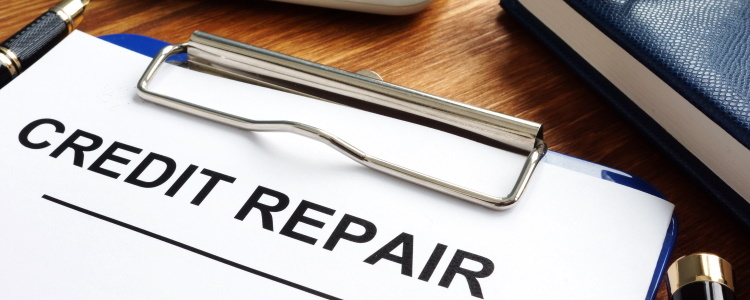Your credit score can never be “zero,” but you can have no credit. If you’ve never borrowed before, it's likely you have a thin file, which means your credit “file” is literally empty. It’s not a bad thing, but it can make lenders hesitant to approve you for new credit.
Roadblocks of a Thin Credit File
It’s not uncommon for new borrowers to start their credit history off strongly with a car loan. Auto loans are installment loans, typically large, and usually last for a few years. Combine all that with the potential positive impact on credit, and a loan like this can really jump-start your credit file.
However, traditional lenders may look at someone with no credit or a thin file as risky, and may not approve you for a car loan. This is simply because you haven’t proven your ability to repay a large loan yet.
But you’re not out of luck. There are a few things you can do to increase your chances of getting approved, since there are subprime auto lenders that are often able to work with no credit and bad credit borrowers. Additionally, we’ve got some tips that can help you build a credit history, thicken up that thin file, and help you get on the road.
Check Your Credit Reports
Just because you’ve never had a loan before doesn’t mean that your credit reports are blank. A credit score doesn’t actually start at “zero.” On the FICO credit score scale, the lowest score is 300, with the highest being 850. If you’re a new borrower, you’re normally somewhere in the lower middle of that range.
Your credit score is generated from your credit reports. There’s a lot of information from different types of credit accounts that can be listed on your reports. Before you apply for a car loan, you should know what lenders are seeing when they’re evaluating your creditworthiness.
To avoid being left in the dark about what your credit reports say about you, you can request your reports online at www.annualcreditreport.com. You’re entitled to a free copy of your reports from each of the three major credit reporting agencies – TransUnion, Equifax, and Experian – once every 12 months.
However, until April 2021, you can request a free copy of each once a week. This is due to the coronavirus pandemic, and the bureaus are allowing everyone the ability to keep track of their credit during this uncertain time.
Once you’ve looked through your credit reports, you’re able to see what lenders see when you apply for new credit. All three are likely to generate differing scores and display different information, so look through them carefully. You can also dispute any errors or duplicates and get them removed. Disputing is a term used when you attempt to correct an error on your credit reports.
As an example of a dispute, say you find an old account you’ve already paid off on one of your credit reports. So, you contact the bureau, file a dispute, and provide proof that an old “delinquent” account was already paid off using a receipt, bank statement, or something similar. The bureau then removes the error, improving your score. This is called credit repair, and if you have multiple credit errors, disputing incorrect negative accounts can really boost your score.
However, if you find no errors in your reports (or nothing reported at all), you can ask someone to help you out with an auto loan, save up for a down payment, and work with the right lender.
Getting an Auto Loan With Zero Credit
 With zero credit, you may have to apply with a subprime lender that works with no credit borrowers. While traditional lenders may not approve some first-time borrowers, being in a no credit situation is better than having bad credit, in many cases.
With zero credit, you may have to apply with a subprime lender that works with no credit borrowers. While traditional lenders may not approve some first-time borrowers, being in a no credit situation is better than having bad credit, in many cases.
Subprime lenders aren’t available at every dealer since they work through a dealership’s special finance department. Once you find a dealer to work with, you’re still going to have to meet the lender requirements to get financed.
To meet a subprime lender’s requirements, you’re typically going to need:
- A minimum monthly income of $1,500 to $2,000, before taxes.
- A down payment of at least $1,000 or 10% of the vehicle’s selling price.
- A stable living situation and solid work history.
This means providing computer-generated check stubs, recent utility bills, and a trade-in with equity and/or cash for the down payment. Additional items typically include a valid driver’s license, a working contract cell/landline phone, and, if you get approved, a list of personal references. Some lenders may require more documents to determine your ability to qualify for a car loan, but the items we’ve listed are rather common ones that you can prepare for.
If you want to increase your chances of approval even more, you can also ask a cosigner to sign the loan with you. A cosigner is someone with a good credit score that is legally obligated to pick up the slack if you’re unable to make the auto loan payment, which makes a lender more likely to approve you.
Many new borrowers ask cosigners for help when they’re just starting out, and normally, cosigners are parents, close family members, or friends. Keep in mind, a cosigner also needs to meet the lender’s requirements on their own.
Finding a No Credit Lender
There are resources available to help new borrowers get into their first car loan. While getting approved for credit when you have no credit history seems difficult, everyone starts somewhere, so why not start with us at Auto Credit Express!
We’ve signed up a nationwide network of dealerships that have special finance departments. Their subprime lenders use more than your credit history to make approval decisions, and we match bad credit, no credit, and odd credit borrowers to dealers for free.
To get matched to a dealership in your area, fill out our free auto loan request form. Give yourself a little “credit” and get started!
















